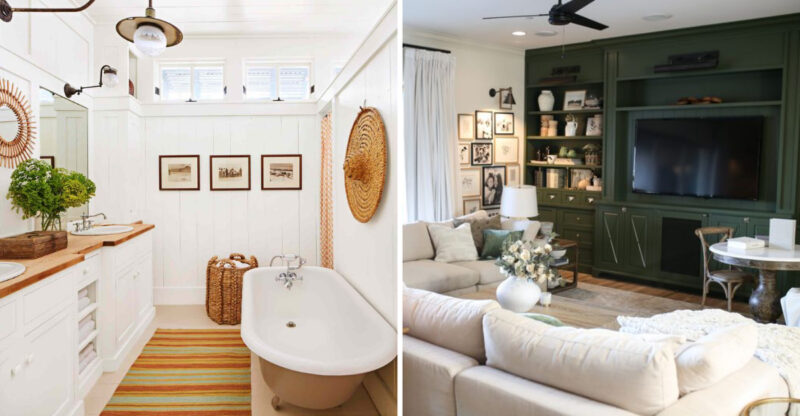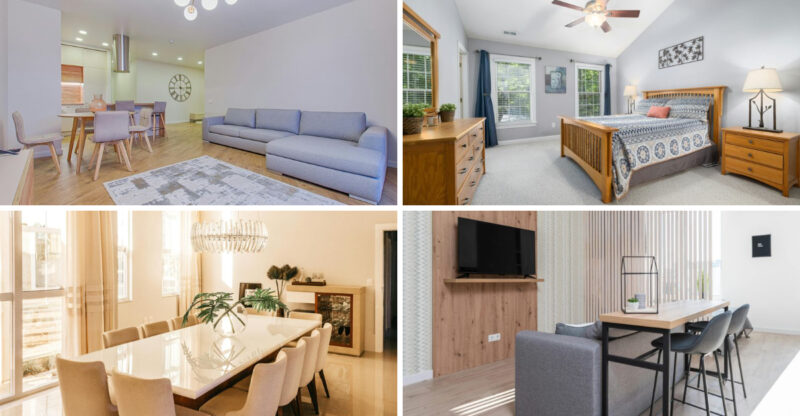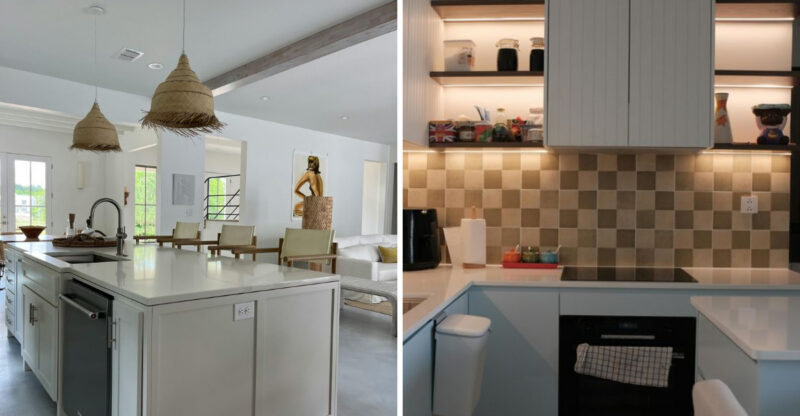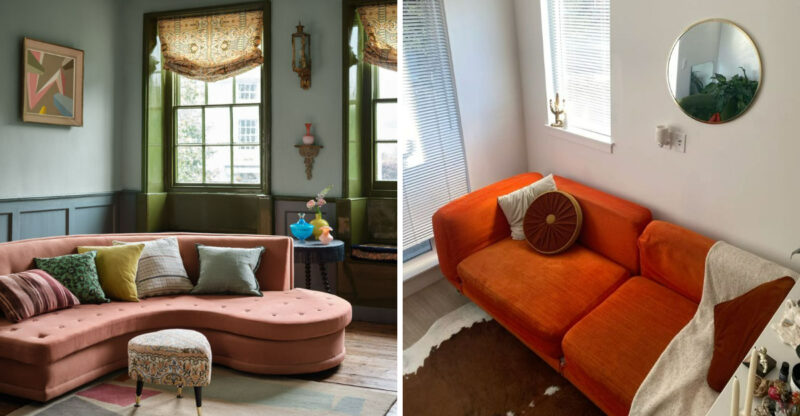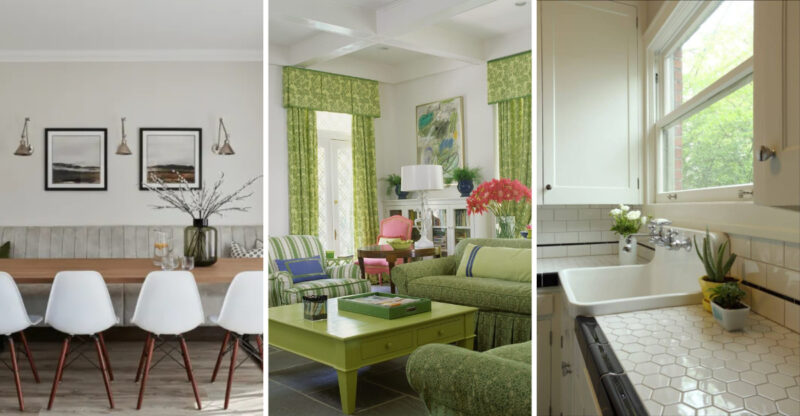13 Styling Errors That Lower Your Home’s Appeal According To Stagers Plus More Design Don’ts
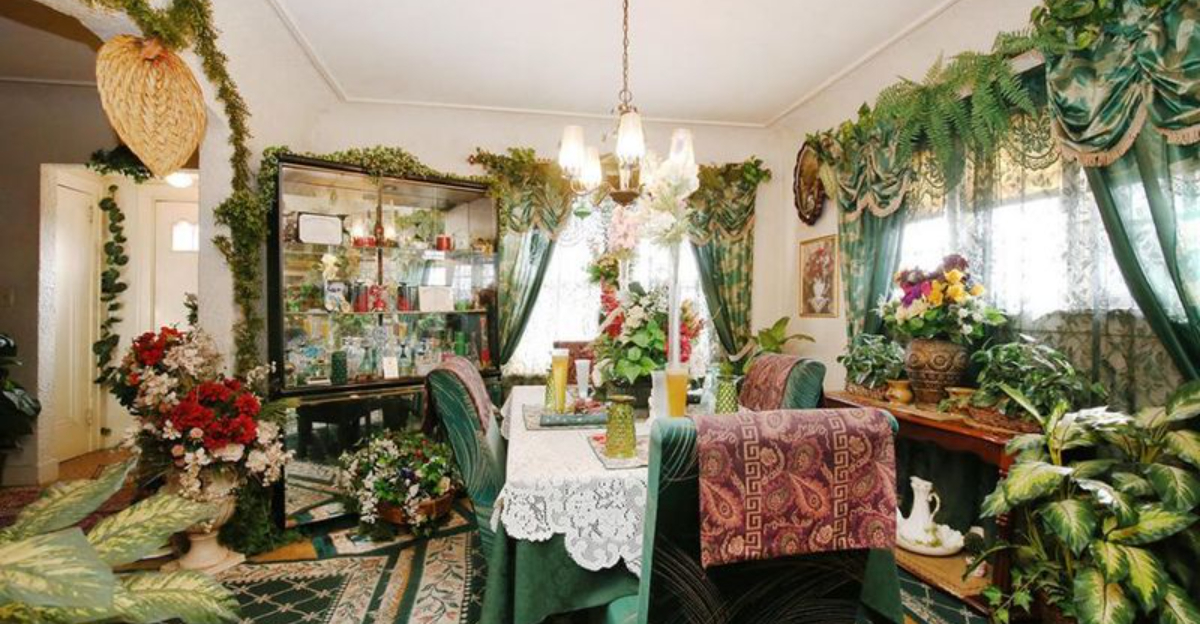
When selling your home, the way you present it can make or break a deal. Professional home stagers know exactly what turns buyers off and what makes them fall in love with a property.
Simple styling mistakes can make your home feel less appealing, while outdated design choices can actively repel potential buyers.
Let’s explore the most common styling errors and design don’ts that might be hurting your home’s appeal.
1. Cluttered Countertops
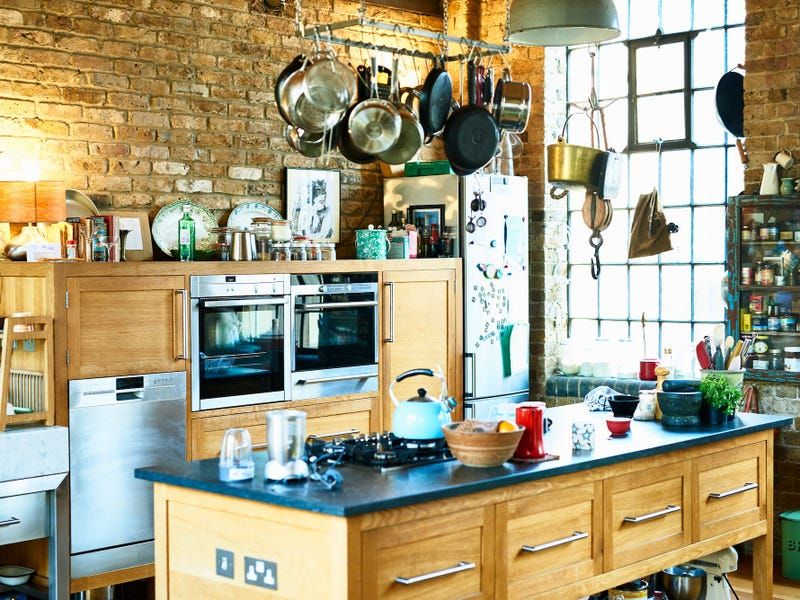
Kitchen and bathroom countertops drowning in appliances, decorations, and everyday items send potential buyers running. A counter packed with toasters, coffee makers, and knife blocks makes spaces look smaller and suggests insufficient storage throughout the home.
Most buyers want to imagine their own stuff in the space, not navigate around yours. Try to keep only one or two attractive items visible perhaps a stylish coffee maker or a small plant.
The same rule applies to bathroom counters. Clear away personal products, leaving just hand soap and maybe a small decorative item. This simple change can make rooms appear larger, cleaner, and more move-in ready.
2. Dark, Heavy Drapes Blocking Light
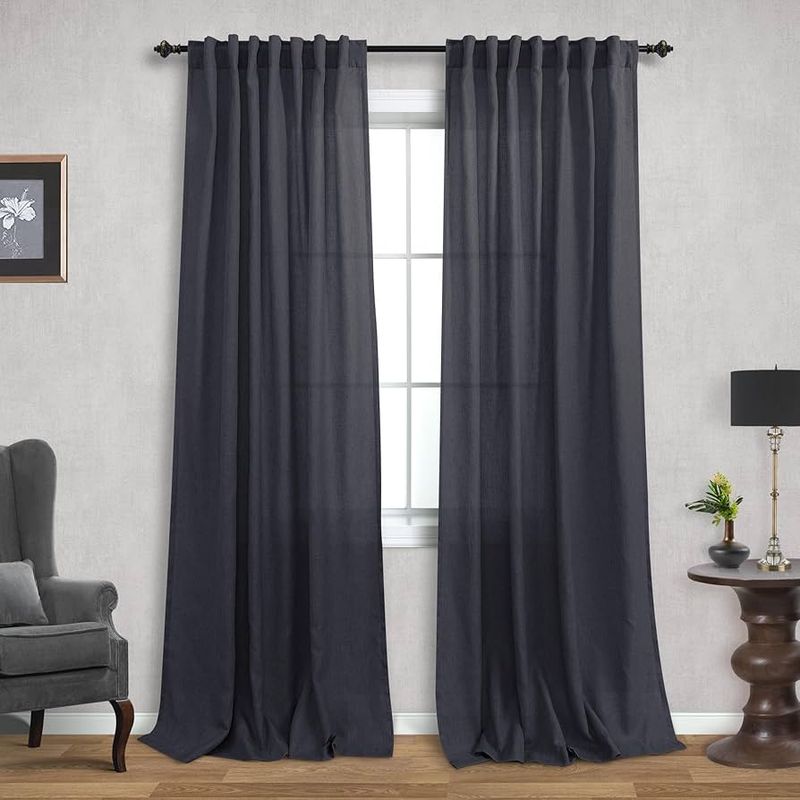
Heavy, outdated curtains do more than just block natural light they can make your entire home feel gloomy and smaller than it actually is. Dark, thick fabrics absorb light rather than letting it bounce around the room, creating a cave-like atmosphere that few buyers find appealing.
Natural light ranks consistently high on buyer wish lists. When windows are covered with heavy treatments, it prevents one of your home’s best selling features from shining through.
Replace dark drapes with light, neutral window coverings that can be fully opened during showings. This simple switch can transform rooms, making them feel airier, more spacious, and significantly more inviting to potential buyers.
3. Excessive Personal Photos
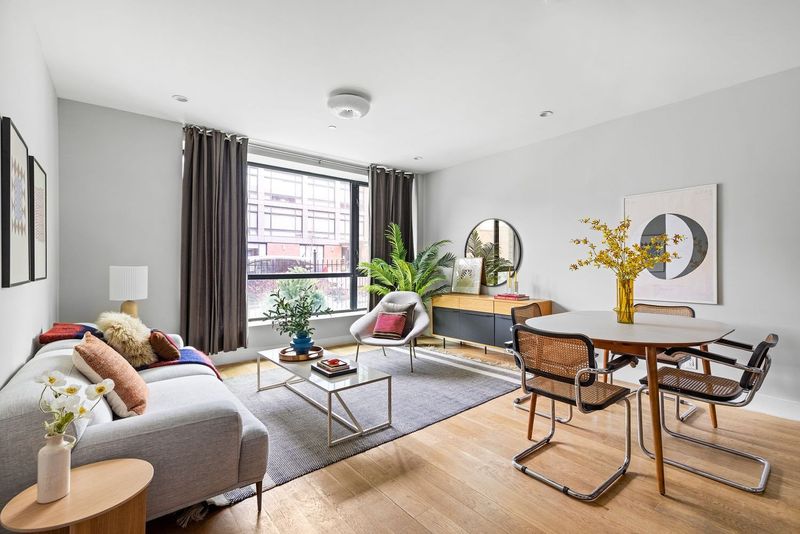
Family portraits lining every wall and surface make it nearly impossible for buyers to envision themselves living in your home. While these cherished memories mean everything to you, they actively prevent potential buyers from making an emotional connection to the property.
Walls covered in graduation photos, wedding pictures, and vacation snapshots remind visitors they’re in someone else’s territory. This creates a psychological barrier to imagining the space as their own future home.
Pack away most personal photographs before showings, leaving just one or two tastefully framed images if desired. This small change helps buyers mentally move in, seeing blank walls as canvases for their own family memories rather than being distracted by yours.
4. Oversized Furniture in Small Spaces
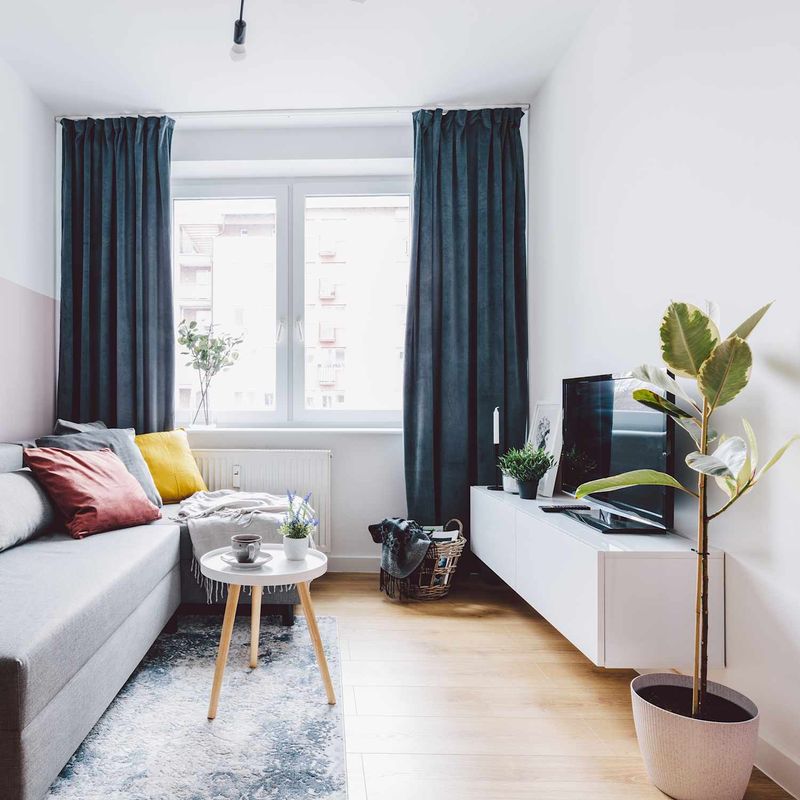
Cramming a sectional sofa into a modest living room is like wearing clothes three sizes too small everything looks squeezed and uncomfortable. Bulky furniture in tight spaces creates awkward traffic flow and makes rooms appear significantly smaller than their actual dimensions.
Buyers often struggle to judge room sizes accurately when oversized pieces dominate the space. That king bed might fit technically in your second bedroom, but it leaves no room for nightstands or comfortable movement around the space.
Consider temporarily replacing massive furniture with appropriately scaled pieces during the selling process. Proper proportions allow buyers to appreciate the true dimensions of each room, making your entire home feel more spacious and functional a major selling point in today’s market.
5. Bold, Uncoordinated Wall Colors
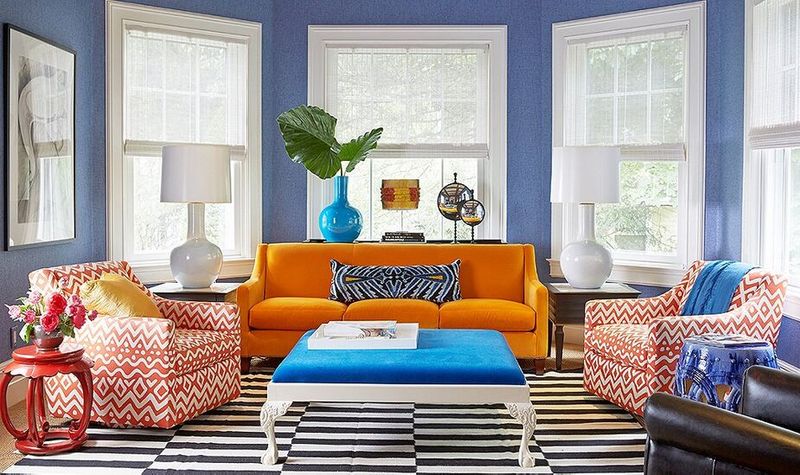
That fire-engine red accent wall you adore might be sabotaging your home sale without you realizing it. Dramatic paint choices often reflect personal taste that rarely aligns with the majority of buyers’ preferences, creating an immediate mental renovation project in their minds.
Walking through a home with a purple bathroom, yellow kitchen, and teal bedroom creates a disjointed experience. Rather than noticing your home’s great features, buyers get distracted calculating painting costs and wondering what other surprises await.
Repainting in neutral tones before listing offers one of the best returns on investment in home selling. Soft grays, warm beiges, and crisp whites create a cohesive flow throughout the home while allowing architectural features not bold paint choices to be the star of the show.
6. Outdated Light Fixtures
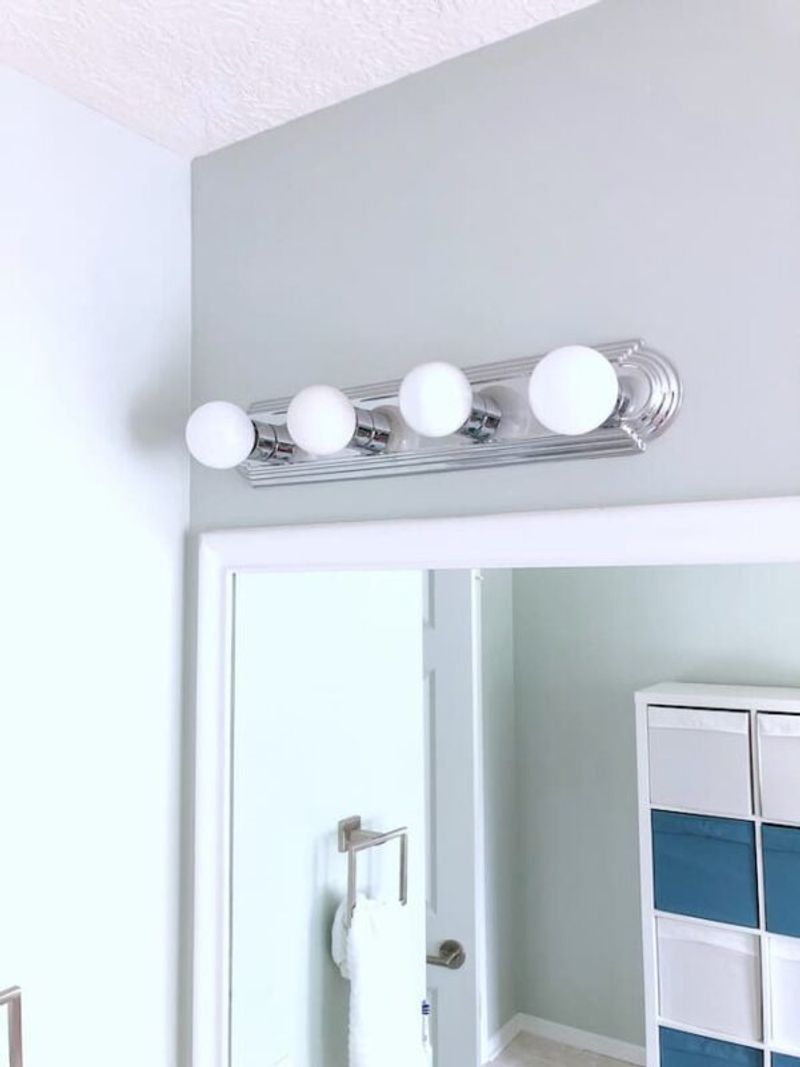
Those brass chandeliers and frosted glass dome lights from the 1990s aren’t just eyesores they’re actively dating your home in buyers’ eyes. Lighting fixtures serve as the jewelry of a room, and outdated pieces can make even recently renovated spaces feel stuck in the past.
Dingy, yellowed fixtures or those with missing bulbs suggest neglected maintenance throughout the property. First impressions matter tremendously, and buyers often notice lighting immediately upon entering a room.
Replacing dated fixtures with simple, contemporary options offers dramatic impact for relatively little investment. Modern pendant lights, sleek flush mounts, or tasteful chandeliers in brushed nickel or matte black instantly refresh spaces. This small change signals to buyers that your home has been well-maintained and thoughtfully updated.
7. Busy Patterned Rugs in Small Rooms
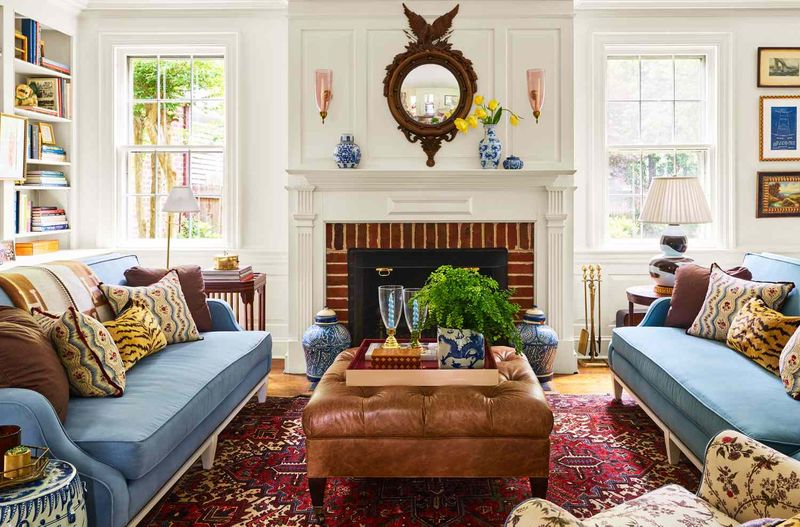
That intricate Persian rug might be a family heirloom, but in a small space, it’s creating visual chaos that makes the room feel cluttered before a single piece of furniture enters the picture. Busy patterns with multiple colors compete for attention and visually shrink floor space.
Small rooms particularly suffer from overly detailed floor coverings. The eye gets no place to rest, creating a sense of confinement rather than the openness buyers crave.
When staging, opt for solid-colored rugs or those with minimal patterns in neutral tones. This simple swap creates a sense of expansiveness and allows other features of the room to shine. Remember, you’re not abandoning your beloved rug forever just temporarily storing it to help your home appeal to the widest possible buyer pool.
8. Too Many Small Décor Items
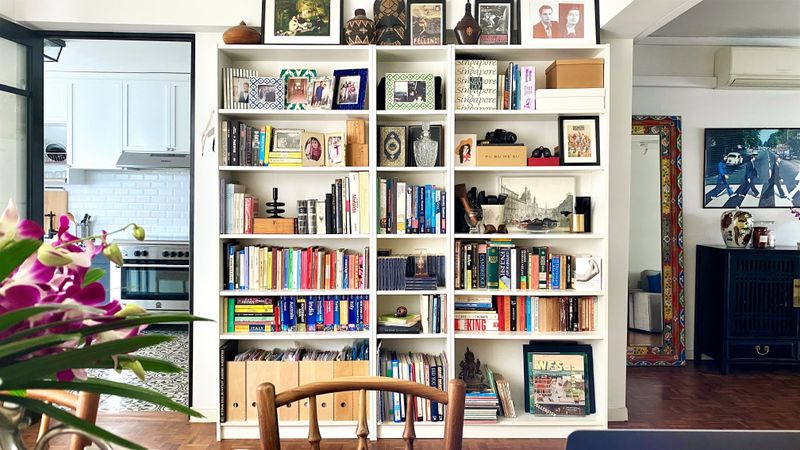
Collections of tiny figurines, numerous small picture frames, and scattered knickknacks create visual noise that exhausts potential buyers. What you see as cherished collectibles, buyers view as distracting clutter that makes shelves, mantels, and tables appear cramped and disorganized.
Dozens of small items also suggest inadequate storage throughout the home. Buyers wonder if they’ll need to display all their possessions because there’s nowhere to properly store them.
Pack away most small decorative objects when selling, keeping only a few statement pieces that add interest without overwhelming. Think in terms of groupings: one large vase rather than five small ones, or a single substantial art piece instead of a gallery wall of tiny frames. This strategy makes rooms feel more spacious while still maintaining visual interest.
9. Furniture Pushed Against Every Wall
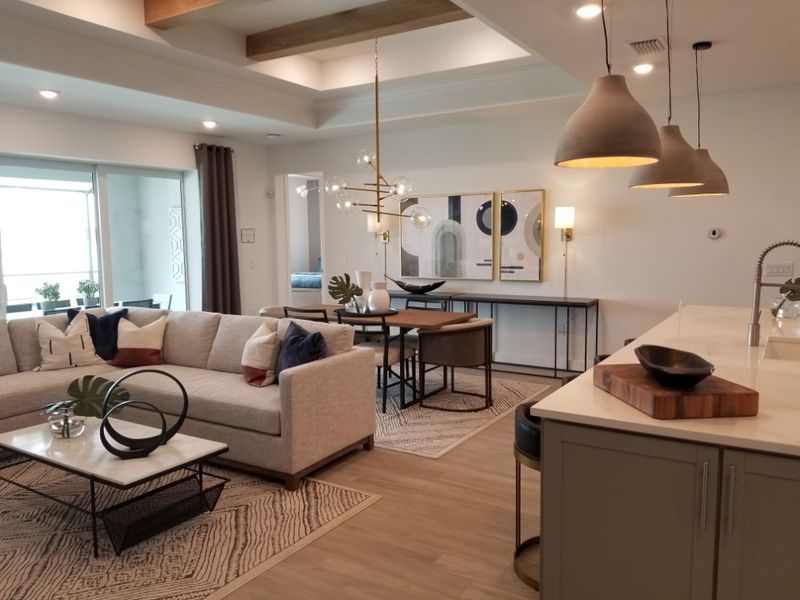
Shoving all furniture against walls creates an awkward bowling alley effect that makes even spacious rooms feel uncomfortable. This common arrangement screams “amateur decorator” to buyers and fails to showcase how spaces can actually function.
Rooms need breathing space between furniture and walls. Without it, the room’s proportions become distorted, making the center feel empty while the perimeter feels crowded.
Try floating furniture away from walls to create conversation areas. A sofa with its back toward a dining area can define separate spaces within an open floor plan. Even pulling pieces just a few inches from walls can dramatically improve flow and feeling. This professional arrangement technique helps buyers envision how they would actually live in and use the space, making your home instantly more appealing.
10. Mismatched Hardware Finishes
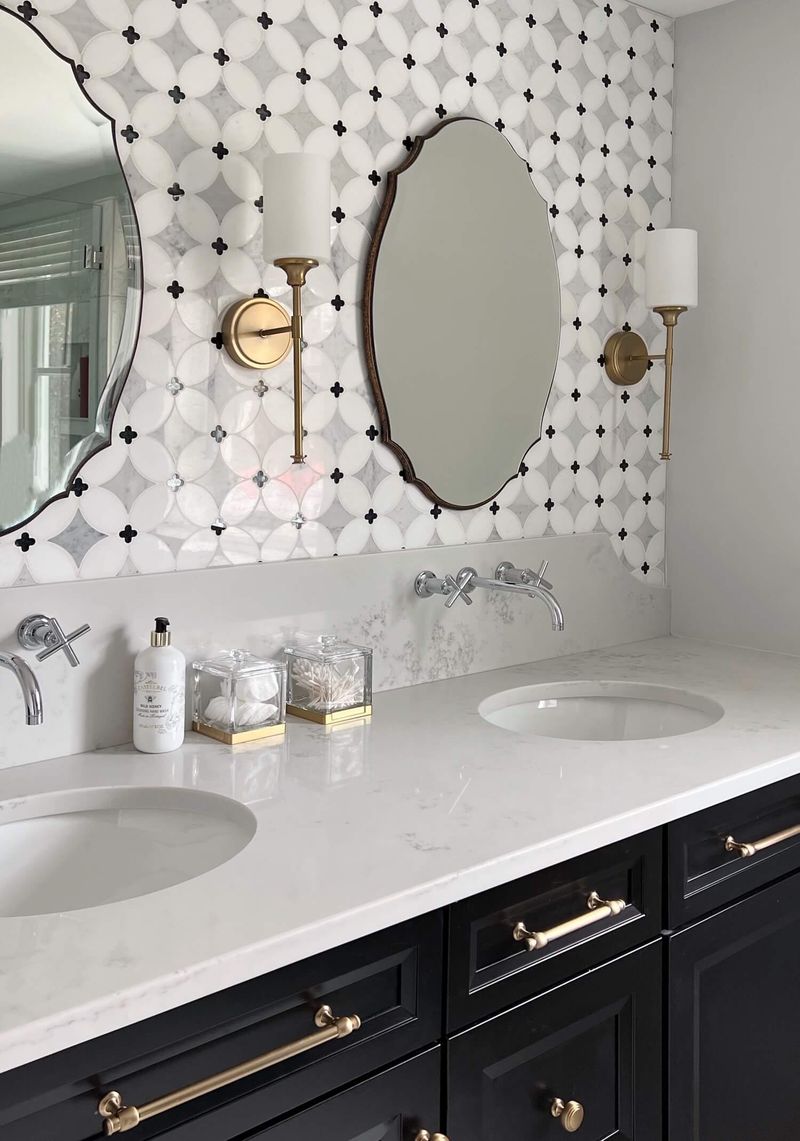
Door handles in brushed nickel, cabinet pulls in antique brass, and faucets in oil-rubbed bronze create visual confusion that registers as “needs updating” in buyers’ minds. This mix-and-match approach to hardware often happens gradually as homeowners replace pieces individually without considering the overall look.
Inconsistent finishes make spaces feel cobbled together rather than cohesively designed. Even if everything is functional, the visual disconnect suggests a lack of attention to detail throughout the property.
Replacing mismatched hardware with coordinated finishes is a relatively inexpensive update with significant visual impact. Choose one finish brushed nickel, matte black, or brass and carry it through doorknobs, cabinet hardware, towel bars, and light switch plates. This simple change creates a sense of intentional design that elevates the entire home.
11. Themed Rooms That Limit Buyers’ Imagination
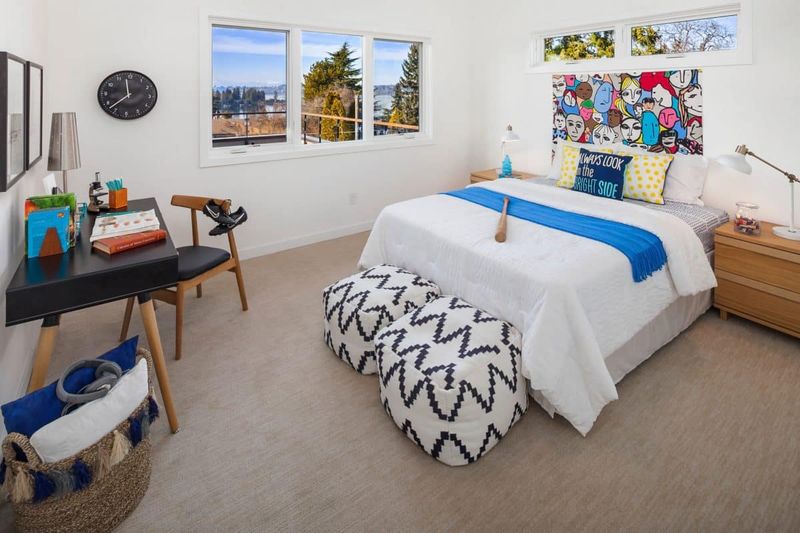
Your nautical-themed guest bathroom complete with rope details, anchor wall art, and seashell soap dispensers might charm your friends, but it actively limits buyers’ ability to see the space as their own. Heavily themed rooms force very specific tastes onto potential buyers.
Sports team bedrooms, princess nurseries, and tropical paradise sunrooms all create the same problem they require buyers to mentally “undo” your design choices before they can envision their own style in the space. This extra mental work often translates to lower offers.
When selling, neutralize themed rooms by removing specific motifs and decorations. Keep the color palette versatile and the decorations minimal. Buyers want a clean canvas they can mentally customize, not a finished picture that doesn’t match their personal vision.
12. Heavy Scented Air Fresheners
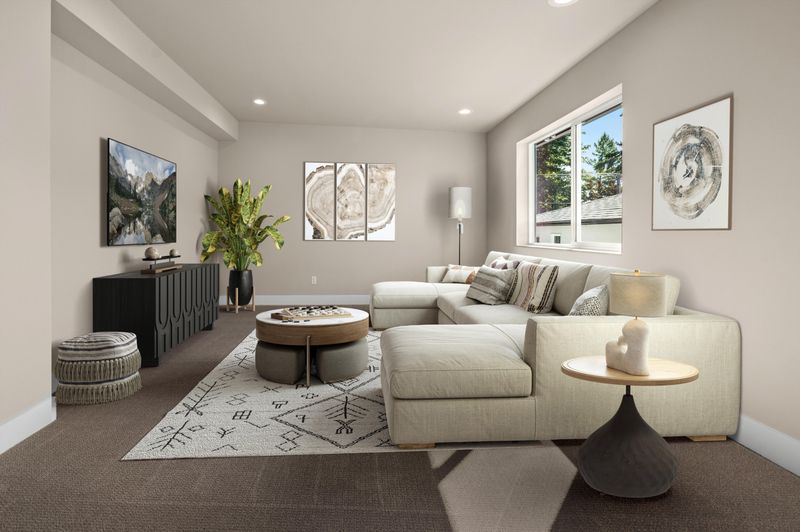
Masking odors with powerful air fresheners, scented candles, and plug-ins creates an immediate red flag for buyers. Strong artificial fragrances make visitors wonder what smells you’re trying to hide pet odors, smoke damage, or mildew problems.
Our sense of smell triggers powerful emotional responses. When potential buyers encounter overwhelming vanilla-cinnamon-pine-meadow-breeze combinations, they experience sensory overload that can trigger headaches or allergic reactions.
Instead of artificial scents, address odor sources directly. Professional carpet cleaning, fresh paint, and thorough ventilation eliminate most household smells. For showings, subtle natural scents like a single vase of fresh flowers or citrus peels simmered briefly with cinnamon create an authentic, welcoming atmosphere without raising suspicions about what lurks beneath those powerful fragrance layers.
13. Ignoring Curb Appeal
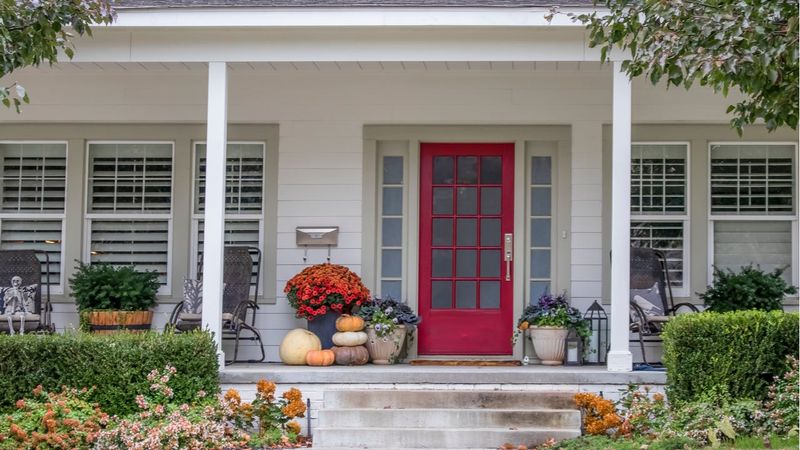
Neglecting your home’s exterior while perfecting the interior is like wearing pajamas with formal shoes the disconnect is jarring and makes a terrible first impression. Overgrown shrubs, peeling paint, and cluttered porches signal neglect before buyers even step inside.
Many house hunters drive by properties before scheduling showings, and some won’t bother visiting if the exterior looks uninviting. First impressions happen within seconds and are difficult to overcome.
Focus on simple curb appeal improvements: fresh mulch, trimmed bushes, a power-washed driveway, and a clean front door can dramatically transform your home’s exterior. Add potted plants flanking the entrance and ensure all exterior lights work properly. These relatively inexpensive fixes create an inviting approach that sets positive expectations for what awaits inside.
14. Popcorn Ceilings
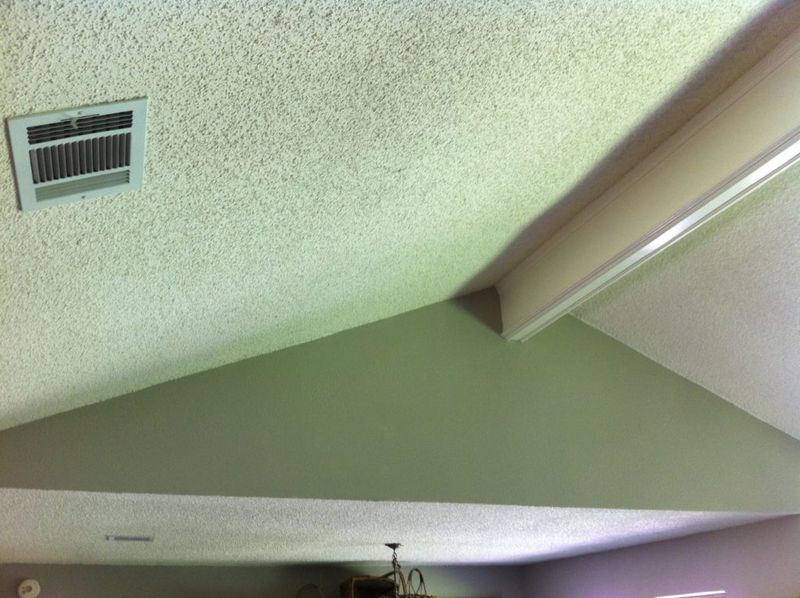
Those bumpy, cottage cheese-textured ceilings scream “dated” to modern buyers and often trigger immediate renovation plans in their minds. Popular from the 1950s through the 1980s, popcorn ceilings now rank among the most universally disliked home features.
Beyond their outdated appearance, these textured ceilings collect dust, are difficult to clean, and can’t be easily painted to freshen up. Worse, popcorn ceilings installed before the mid-1980s may contain asbestos, raising health and remediation concerns.
If possible, consider removing popcorn texturing before listing your home. While this creates mess and expense upfront, smooth ceilings dramatically modernize spaces and eliminate a major buyer objection. If removal isn’t feasible, be prepared for this feature to impact your home’s perceived value and potentially extend its time on the market.
15. Carpet in Bathrooms
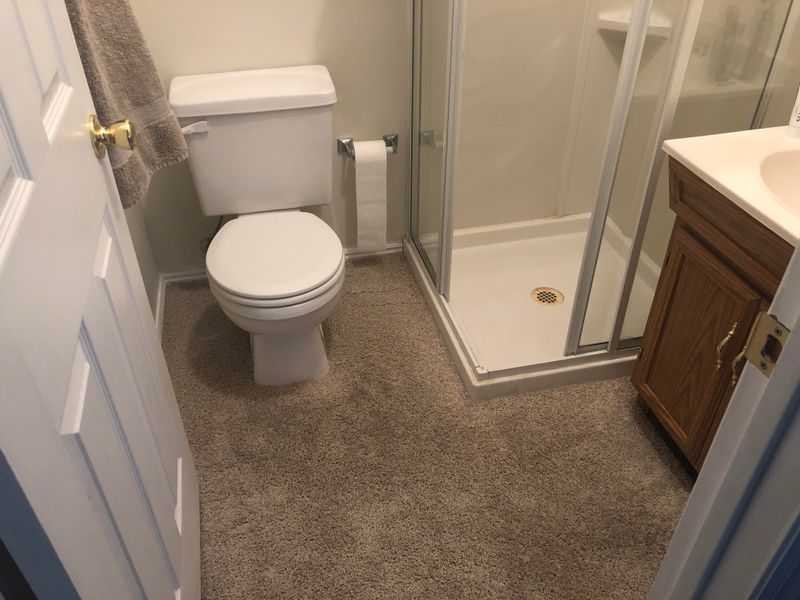
Wall-to-wall carpet in bathrooms ranks among the most perplexing design choices for today’s buyers. This trend from decades past creates immediate concerns about moisture, mold, and hygiene issues in a space specifically designed for water use.
Even pristinely maintained bathroom carpet carries the perception of harboring years of unseen bacteria and dampness. Buyers typically calculate immediate removal costs when encountering this feature.
If your bathroom sports carpet, consider replacing it with water-appropriate flooring before listing. Luxury vinyl tile, ceramic tile, or even quality sheet vinyl offer affordable, moisture-resistant alternatives that dramatically improve buyer perception. This relatively simple update removes a major psychological barrier for potential buyers while creating a fresher, more hygienic appearance that better showcases the bathroom’s positive features.
16. Fluorescent Tube Lighting
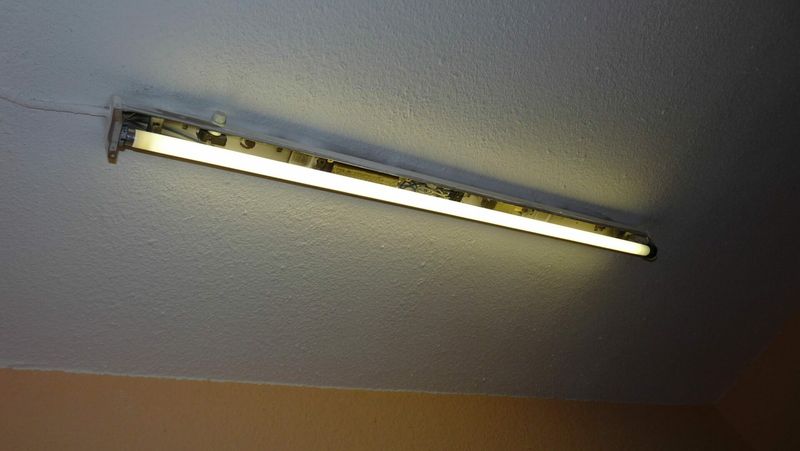
Harsh fluorescent tube fixtures cast an unflattering bluish-green glow that makes even the most beautiful spaces feel like a sterile office or outdated classroom. This institutional lighting creates a cold atmosphere while highlighting every flaw in your home.
Beyond the unflattering light quality, the exposed tubes and dated housing fixtures immediately date a space to decades past. The buzzing and flickering common with older fluorescent installations further compounds the negative impression.
Replacing fluorescent panels with recessed lighting, track lighting, or modern flush-mount fixtures instantly modernizes spaces. If replacement isn’t feasible before selling, consider installing fluorescent tubes specifically designed with warmer color temperatures (look for “warm white” options). This simple change can significantly soften the harsh effect while you’re marketing your home.
17. Mirrored Walls Throughout
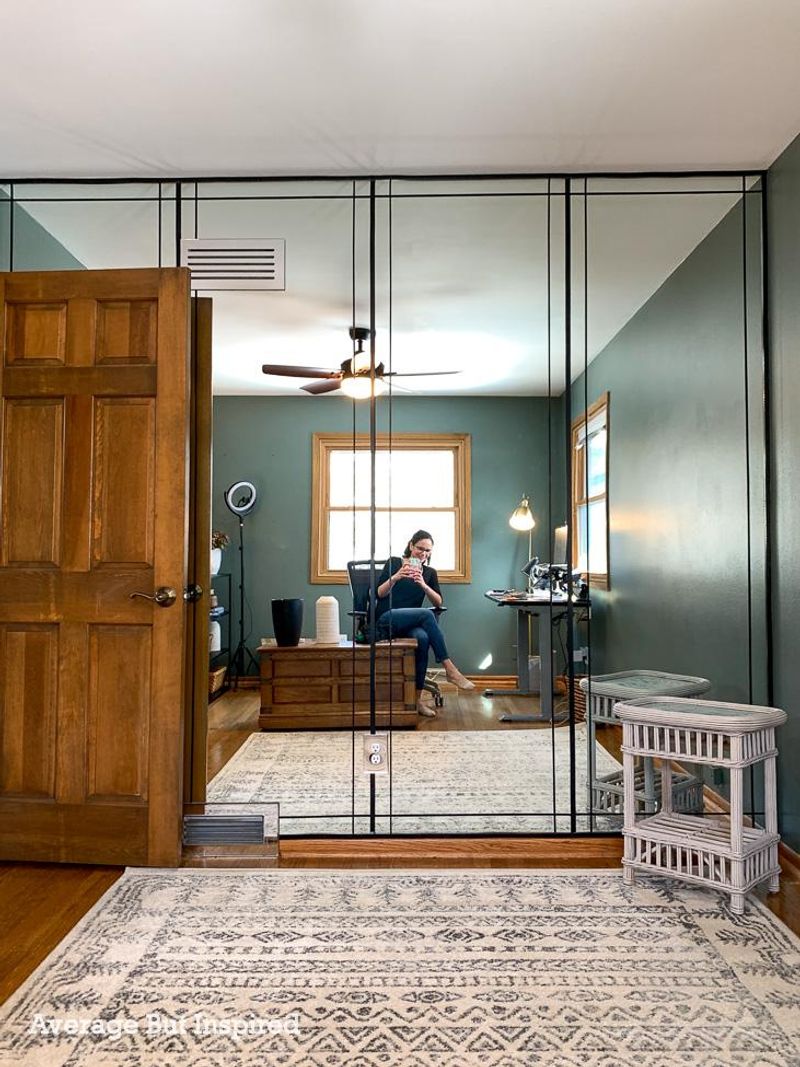
Floor-to-ceiling mirrored walls, once the height of 1970s and 80s disco-era chic, now create an immediate “renovation needed” reaction from most buyers. While strategically placed mirrors can enhance light and create the illusion of space, entire mirrored walls feel dated and create disorienting reflections.
These expansive mirror installations often feature visible seams, yellowing edges, or antiqued finishes that further date the space. Many buyers also find constantly seeing their reflection from multiple angles uncomfortable and distracting.
If your home features mirrored walls, consider removing them before listing if feasible. When removal would damage underlying surfaces too extensively, hanging large artwork or tapestries can minimize the mirrored effect. At minimum, ensure any remaining mirrors are spotlessly clean without streaks or spots that draw attention to this polarizing feature.
18. Plastic Couch Covers
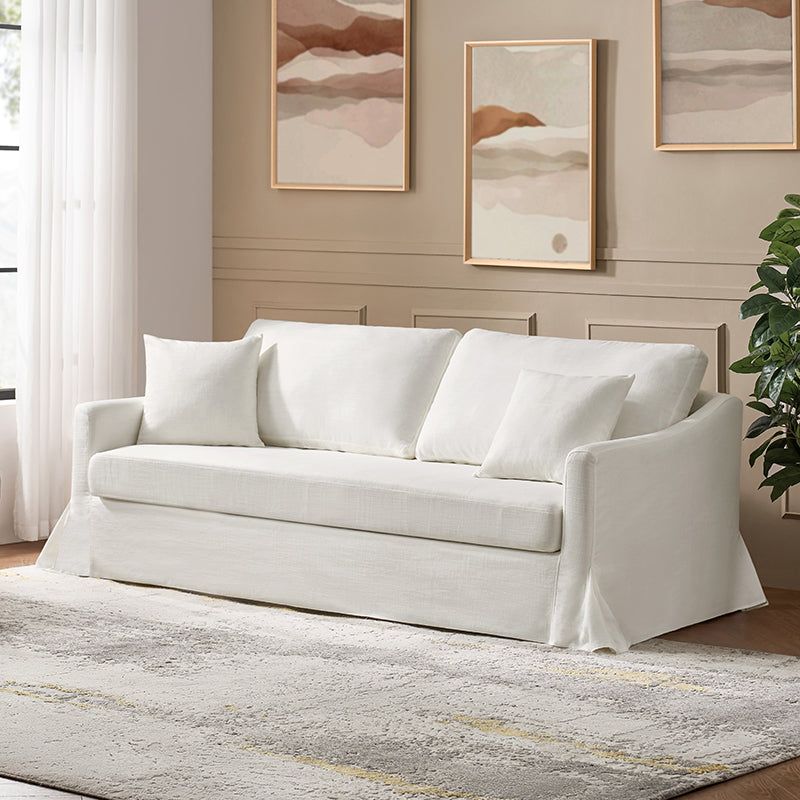
Clear plastic slipcovers preserving pristine furniture communicate the wrong message to potential buyers this house is for looking at, not living in. These protective covers create both a visual and tactile barrier, making spaces feel uninviting and oddly temporary.
The distinctive crinkle sound and sticky feel of vinyl-wrapped cushions evoke memories of grandparents’ formal living rooms where children weren’t allowed to sit. This creates the opposite of the comfortable, relaxed atmosphere most buyers seek.
Remove all plastic furniture covers before showings to create a more inviting, livable appearance. If protecting furniture during the selling process concerns you, consider investing in washable slipcovers in neutral tones instead. These create a fresh look while still offering protection, without the institutional feel of plastic covers that actively repel rather than welcome potential buyers.
19. Wallpaper Borders Near Ceilings
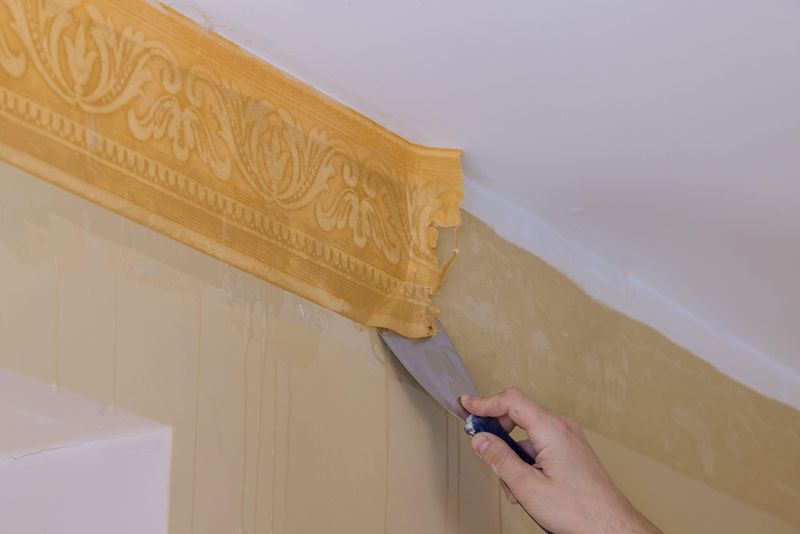
Those country geese, floral patterns, or Victorian scrollwork borders running along the tops of your walls instantly transport buyers back to the 1980s and 90s and not in a charming, nostalgic way. These horizontal strips visually chop up rooms and draw attention to ceiling height limitations.
Wallpaper borders were often used to tie together color schemes in adjacent rooms, but today’s buyers prefer more subtle transitions and cohesive flow. The dated patterns and faded colors typically found on these borders signal “renovation needed” to most house hunters.
Removing wallpaper borders before listing your home offers significant visual impact for relatively little effort. Most can be peeled away with minimal wall damage, requiring only minor touch-up painting afterward. This small update immediately modernizes spaces and helps buyers see your home’s potential rather than its dated design choices.
20. Excessive Fake Plants
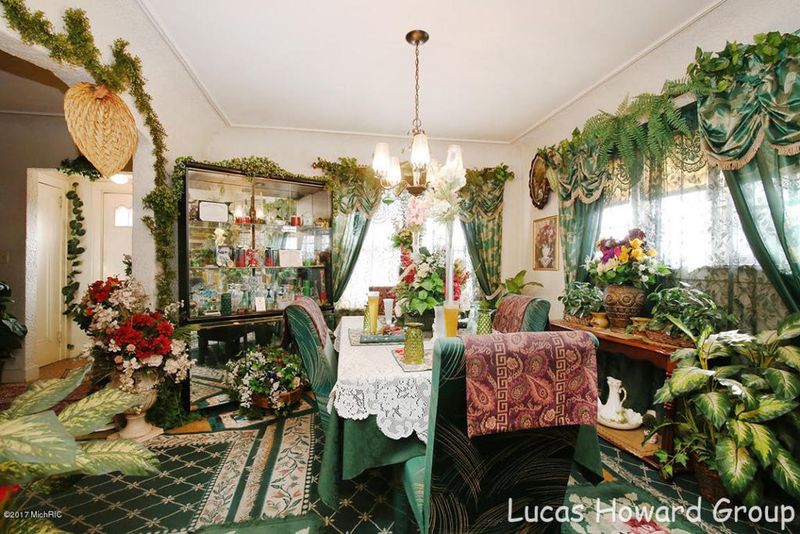
Dusty silk ferns, faded artificial flowers, and plastic palms scattered throughout your home create a dated, maintenance-free look that lacks the vitality buyers crave. While one quality faux plant might go unnoticed, collections of obviously artificial greenery appear lifeless and collect visible dust.
Fake plants from different decades often feature telling characteristics the overly shiny leaves of 80s specimens or the unrealistic colors of 90s varieties. These time-stamped details date your décor more than you might realize.
Replace most artificial plants with a few real, low-maintenance options like pothos, snake plants, or succulents. If live plants aren’t feasible during showings, simply remove most artificial ones rather than replacing them. Empty space appears cleaner and more intentional than dusty faux foliage that reminds buyers of waiting rooms and outdated decorating trends.
21. Visible Extension Cords and Cable Wires
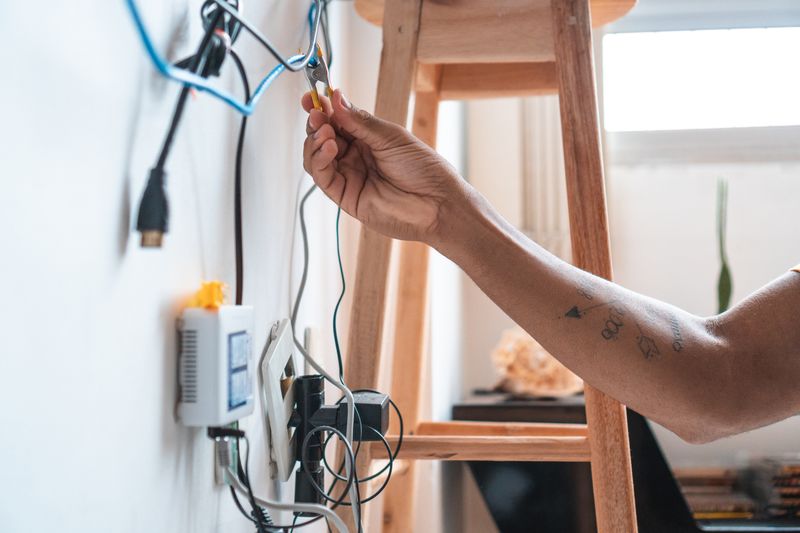
Tangles of exposed cords snaking across floors and walls create an immediate impression of insufficient electrical planning and potential safety hazards. These visible wires not only look messy but suggest the home hasn’t been updated to accommodate modern technology needs.
Extension cords running under rugs or along baseboards particularly concern buyers, as these arrangements pose fire risks and trip hazards. Multiple power strips clustered around limited outlets further emphasize the electrical system’s inadequacy.
Before showings, take time to properly manage visible cords using cord covers, cord clips, or strategic furniture placement. Consider having an electrician install additional outlets in high-use areas if feasible. These relatively simple fixes transform the impression from “outdated electrical system” to “move-in ready” in buyers’ minds, potentially preventing lowball offers that factor in electrical upgrades.

